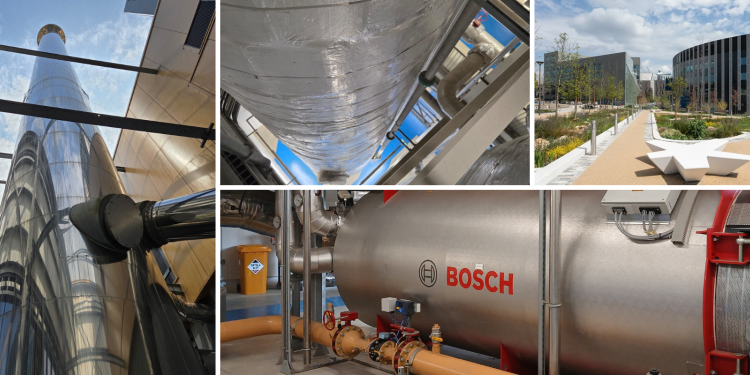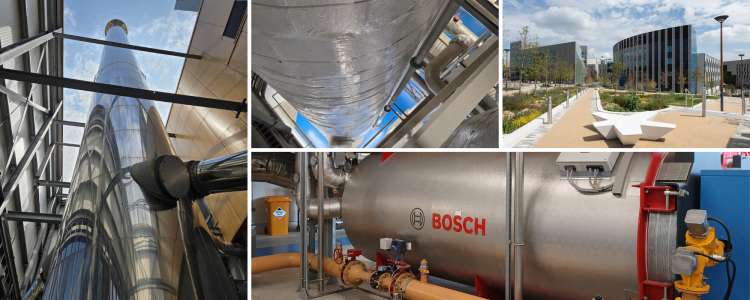A look inside the innovative system powering Newcastle

We've been visiting the innovative, low carbon heat system that's powering increasing amounts of Newcastle.
Tours of the Helix district energy centre - part of a new development a stone's throw from St James' Park football stadium - were taking place alongside Climate Change Forums, which we also joined.
It was also a landmark moment for the centre, as an agreement was reached for it to power all of Newcastle College's seven buildings in the city.
Our assistant director for energy, carbon & technical, Davide Natuzzi, said afterwards: "The visit to the plant was particularly valuable in helping us appreciate the scale of an energy centre that supplies heat to several public and non-public buildings."
What were the aims of the sessions?
Newcastle City Council described their Climate Change Forums as a chance to "hear from the public and discuss Newcastle's journey in tackling climate change through collectively working towards a greener and more energy efficient city."
It was hosted by their cabinet member for climate and transport, Juna Sathian, who is also an associate professor and head of physics at Northumbria University.
The session's focus was on energy and was in partnership with the Helix Energy Centre operator, Bring Energy.
The event included a visit to the facility, which Davide joined and took these pictures:

Images copyright Salix Finance
This was followed by a presentation and discussion on the opportunities regarding energy and heat in the city, which the council wants to help feed into the development of its broader strategy in this space.
"It was insightful to learn about the future plans to expand the heat network to additional buildings in the area, and potentially to residential properties," Davide said.
We were told during the presentation how a contract had recently been signed for the system to provide energy to the seven buildings including Newcastle College, and how it could soon also be powering St James' Park - the home of Newcastle United FC - and the Royal Victoria Infirmary.
How the heat network operates
The networks supply heat to buildings from a central source, avoiding the need for households and workplaces to have individual, energy-intensive and expensive heating solutions - such as gas boilers.
Across the River Tyne in Gateshead, a similar project uses heat from water pumped up from flooded coal seams to deliver hot water to 350 council houses, offices, Gateshead College and the Baltic Centre for Contemporary Art.
In a report published in February by the Department for Energy Security and Net Zero it was predicted that this and similar heat zones could deliver annual carbon savings of about 35ktCO2e annually. (You can read more about Newcastle's heat network pilot in this government report.)
"The system itself was impressive and certainly worth the visit," added Davide.
"The energy centre spans three floors of an entire building, with components significantly larger than those typically found in standard plant rooms. For example, the plate heat exchanger stood at an impressive three metres tall, and the water buffer tanks reached six metres in height.
"The discussion after the visit at the energy centre was insightful, and I particularly enjoyed the live survey on the Newcastle’s Heat Strategy.
"It was a great way to engage participants and connect people to projects of this kind."
A great way to engage participants and connect people to projects of this kind.
Newcastle's efforts to reach net zero
Like many other authorities, Newcastle City Council has an aim to reach net zero emissions by 2030, having published this action plan in 2020.
The council has used around £27m through the Public Sector Decarbonisation Scheme (PSDS).
This includes installing solar panels, air source heat pumps and energy efficiency improvements across schools, libraries, leisure centres, offices and theatres.
It's estimated this will all save 2,700 tonnes of carbon dioxide.
One example is the ongoing £4m project to decarbonise Benfield Secondary School in the city by adding new solar panels, heat pumps, lighting and insulation.
Meanwhile, Newcastle has also partnered with Finnish capital Helsinki to share knowledge as the two cities aim to reach net zero.




